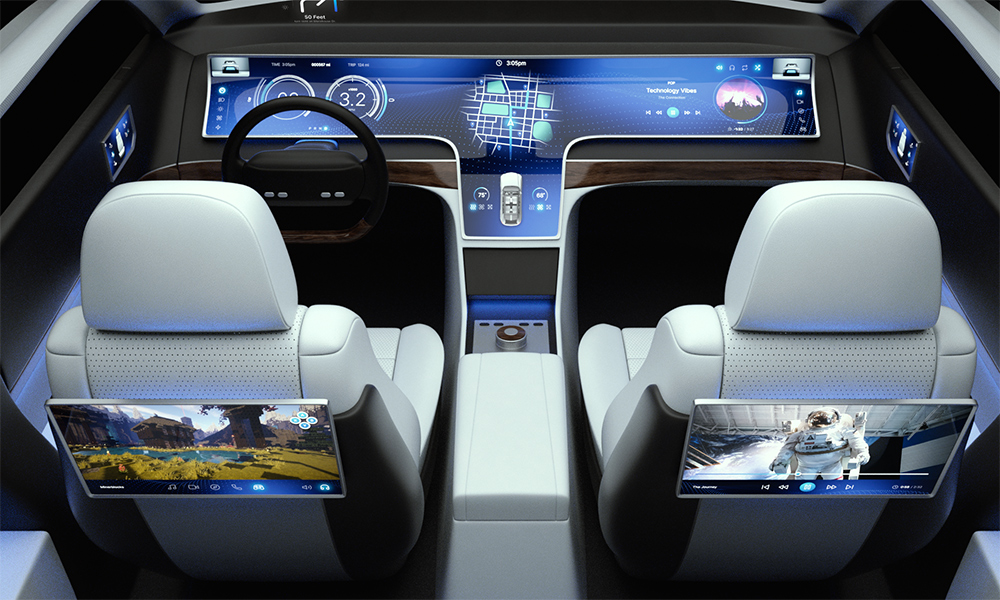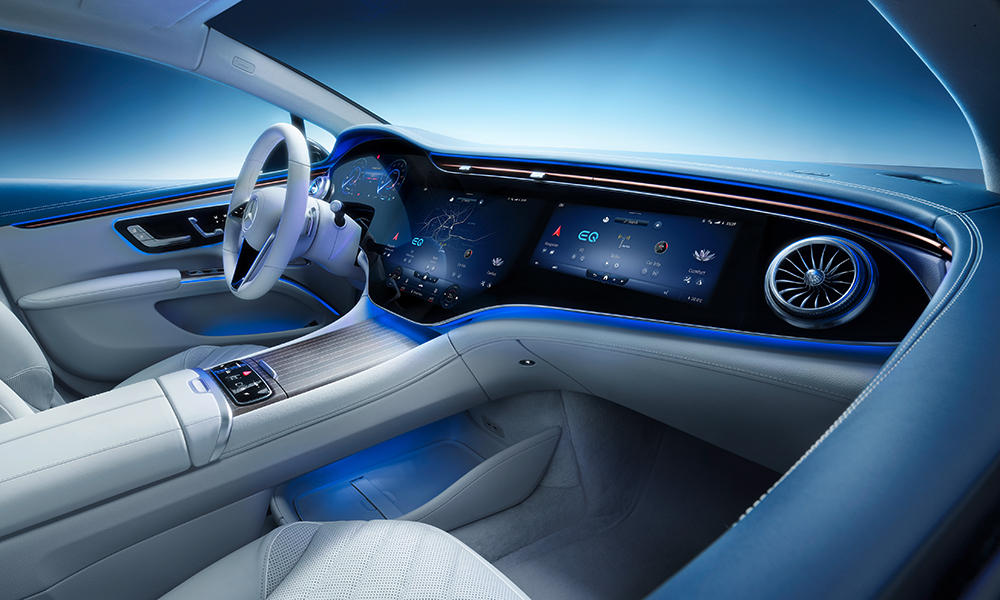特斯拉(Tesla)将汽车变成了轮子上的智能手机,而落在后面的汽车制造商如今开始寄希望于移动手机芯片制造商帮助其缩小不断扩大的技术差距。
上周,半导体设计商高通(Qualcomm)与包括沃尔沃(Volvo)和本田(Honda)在内的数家汽车品牌达成了进一步的交易,这些交易有望满足驾驶者不断增长的需求,也就是在车中享受三星(Samsung)的Galaxy S21手机能够给其带来的无缝连接性。
过去,汽车制造商非常不愿意透露其汽车零部件的供应商。然而,芯片制造商不断增长的重要性则打乱了这个传统行业的等级关系。这些不可阻挡的趋势让半导体制造公司一跃站到了食物链的顶端,也让其成为了汽车公司的战略合作伙伴,而不仅仅只是一家底层供应商。
高通的首席执行官安蒙(Cristiano Amon)在今年的国际消费电子展(Consumer Electronics Show)上表示,高通只是在应用其在智能手机中大获成功的“相同策略”,以打造一系列价值约130亿美元的交易,而此时公司甚至还没有开展第一次收购。
这位首席执行官在上周说:“科技对汽车行业的颠覆程度要比对其他任何行业都更猛烈。汽车已经被彻底改变,持有和驾驶车辆的体验也发生了变化。汽车公司与其客户之间的关系亦是如此。”

全球半导体的短缺已经凸显了芯片在保持汽车生产线运转方面的重要性。然而,特斯拉却没有受到这一短缺的影响,其产量在去年增长了87%,因为它采用的方式是将汽车算力集中于一个高级处理器,而不是用可靠、稳健但已被淘汰的电路系统,将算力分散至各种商用微控制器。
正是因为采用了这种方式,特斯拉在改善汽车性能和续航方面的能力才一直处于领先地位,并在数年前就先于对手通过无线固件升级,解锁了多种有趣的新功能,例如视频游戏和其他复活节彩蛋。
集大成者的驾驶舱
埃隆·马斯克的成功证明,对购车者来说,远程信息处理、娱乐信息节目以及高级自动驾驶功能在未来的重要性,即便不超过汽车的马力和扭矩参数,也将处于同一水平。这一趋势甚至促使索尼(Sony)这类消费电子集团开始考虑造车。
高通将这三种迅速发展的领域统称为汽车的“数字底盘”,也就是车辆必需的、与机械部件有着同样重要意义的电子原件部分。这两者的结合将提升消费者在驾驶时的整体用户体验。
高通欧洲(Qualcomm Europe)的业务负责人恩里科·萨尔夫托里在上周对记者说:“我们坚信,对于汽车架构师来说,数字底盘是未来[竞争]的差异化元素。”
不管是大众(Volkswagen)的ID.4增强现实型驾驶员抬头显示,横跨梅赛德斯-奔驰(Mercedes-Benz)的EQS仪表板的有机形状超级屏幕,还是特斯拉的Model S Plaid的强大的中央显示屏,汽车向其用户传递信息的方式正在变得越来越具有创新力。这一趋势则要求汽车采用更加复杂的处理器来实现。

沃尔沃及其附属主打性能的品牌极星(Polestar)如今已经同意在其即将发布的电动车型中使用第三代高通骁龙Cockpit芯片,以打造更具吸引力、可以媲美特斯拉的体验。
通过以简单、直观的方式合理地传输数据,汽车制造商及其芯片合作伙伴还能够协助驾驶员的决策过程,并改善交通安全性。
沃尔沃汽车(Volvo Cars)的用户体验业务负责人托马斯·斯托维切克称:“汽车将变得更加互联,而且将有更多的感应器,会搜集更多的信息,也会向用户展示更多的信息。所有这一切都将面向用户汇聚于驾驶舱中。”
索尼PlayStation的力量
传统汽车制造商还有很多需要迎头赶上的地方。大多数平价车型配备的都是传统的仪表盘,而不是数字仪表盘。保时捷(Porsche)在设计时就没有考虑使用数字仪表盘:他们打造的每一辆燃油车至少都配备了一个模拟转速表测量仪,这样,驾驶者在引擎工作时便可以看到指针的转动情况。
特斯拉最新的娱乐信息节目系统名为MCU3,拥有丝滑的触屏指令流畅度和超快的响应速度。在下一代硬件升级时,马斯克倾向于放弃此前较慢的英特尔(Intel)的Atom处理器,并选用来自于其竞争对手AMD的Ryzen嵌入式芯片。此举将让MCU3的算力向索尼最新的PS5游戏主机看齐。
法国的汽车制造商雷诺(Renault)已经充分认识到,公司需要对全系列车型的仪表板科技大动干戈。公司已经开始采购高通第三代骁龙Cockpit信息娱乐节目芯片,并在与高通签署新协议之前将其用于自家全新紧凑型电动轿跑Mégane E-Tech。
雷诺计划在其整个产品线中都采用全系列的高通汽车半导体产品,包括骁龙Ride高级驾驶员协助处理器。双方的交易显示,首款车型将于2026年年初面世。通用汽车(General Motors)在上周也表示,公司将从高通购买自动驾驶芯片,并将其用于即将推出的凯迪拉克(Cadillac)的Celestiq车型。
雷诺集团(Renault Group)的首席执行官卢卡·德·梅奥在上周的国际消费电子展上解释说:“如今,汽车行业格局的演变速度比以往任何时候都快。汽车体验正越来越数字化。因此,要跟上客户的期许,我们就得与高通这样的顶级科技公司保持密切合作。”(财富中文网)
译者:冯丰
审校:夏林
特斯拉(Tesla)将汽车变成了轮子上的智能手机,而落在后面的汽车制造商如今开始寄希望于移动手机芯片制造商帮助其缩小不断扩大的技术差距。
上周,半导体设计商高通(Qualcomm)与包括沃尔沃(Volvo)和本田(Honda)在内的数家汽车品牌达成了进一步的交易,这些交易有望满足驾驶者不断增长的需求,也就是在车中享受三星(Samsung)的Galaxy S21手机能够给其带来的无缝连接性。
过去,汽车制造商非常不愿意透露其汽车零部件的供应商。然而,芯片制造商不断增长的重要性则打乱了这个传统行业的等级关系。这些不可阻挡的趋势让半导体制造公司一跃站到了食物链的顶端,也让其成为了汽车公司的战略合作伙伴,而不仅仅只是一家底层供应商。
高通的首席执行官安蒙(Cristiano Amon)在今年的国际消费电子展(Consumer Electronics Show)上表示,高通只是在应用其在智能手机中大获成功的“相同策略”,以打造一系列价值约130亿美元的交易,而此时公司甚至还没有开展第一次收购。
这位首席执行官在上周说:“科技对汽车行业的颠覆程度要比对其他任何行业都更猛烈。汽车已经被彻底改变,持有和驾驶车辆的体验也发生了变化。汽车公司与其客户之间的关系亦是如此。”
全球半导体的短缺已经凸显了芯片在保持汽车生产线运转方面的重要性。然而,特斯拉却没有受到这一短缺的影响,其产量在去年增长了87%,因为它采用的方式是将汽车算力集中于一个高级处理器,而不是用可靠、稳健但已被淘汰的电路系统,将算力分散至各种商用微控制器。
正是因为采用了这种方式,特斯拉在改善汽车性能和续航方面的能力才一直处于领先地位,并在数年前就先于对手通过无线固件升级,解锁了多种有趣的新功能,例如视频游戏和其他复活节彩蛋。
集大成者的驾驶舱
埃隆·马斯克的成功证明,对购车者来说,远程信息处理、娱乐信息节目以及高级自动驾驶功能在未来的重要性,即便不超过汽车的马力和扭矩参数,也将处于同一水平。这一趋势甚至促使索尼(Sony)这类消费电子集团开始考虑造车。
高通将这三种迅速发展的领域统称为汽车的“数字底盘”,也就是车辆必需的、与机械部件有着同样重要意义的电子原件部分。这两者的结合将提升消费者在驾驶时的整体用户体验。
高通欧洲(Qualcomm Europe)的业务负责人恩里科·萨尔夫托里在上周对记者说:“我们坚信,对于汽车架构师来说,数字底盘是未来[竞争]的差异化元素。”
不管是大众(Volkswagen)的ID.4增强现实型驾驶员抬头显示,横跨梅赛德斯-奔驰(Mercedes-Benz)的EQS仪表板的有机形状超级屏幕,还是特斯拉的Model S Plaid的强大的中央显示屏,汽车向其用户传递信息的方式正在变得越来越具有创新力。这一趋势则要求汽车采用更加复杂的处理器来实现。
沃尔沃及其附属主打性能的品牌极星(Polestar)如今已经同意在其即将发布的电动车型中使用第三代高通骁龙Cockpit芯片,以打造更具吸引力、可以媲美特斯拉的体验。
通过以简单、直观的方式合理地传输数据,汽车制造商及其芯片合作伙伴还能够协助驾驶员的决策过程,并改善交通安全性。
沃尔沃汽车(Volvo Cars)的用户体验业务负责人托马斯·斯托维切克称:“汽车将变得更加互联,而且将有更多的感应器,会搜集更多的信息,也会向用户展示更多的信息。所有这一切都将面向用户汇聚于驾驶舱中。”
索尼PlayStation的力量
传统汽车制造商还有很多需要迎头赶上的地方。大多数平价车型配备的都是传统的仪表盘,而不是数字仪表盘。保时捷(Porsche)在设计时就没有考虑使用数字仪表盘:他们打造的每一辆燃油车至少都配备了一个模拟转速表测量仪,这样,驾驶者在引擎工作时便可以看到指针的转动情况。
特斯拉最新的娱乐信息节目系统名为MCU3,拥有丝滑的触屏指令流畅度和超快的响应速度。在下一代硬件升级时,马斯克倾向于放弃此前较慢的英特尔(Intel)的Atom处理器,并选用来自于其竞争对手AMD的Ryzen嵌入式芯片。此举将让MCU3的算力向索尼最新的PS5游戏主机看齐。
法国的汽车制造商雷诺(Renault)已经充分认识到,公司需要对全系列车型的仪表板科技大动干戈。公司已经开始采购高通第三代骁龙Cockpit信息娱乐节目芯片,并在与高通签署新协议之前将其用于自家全新紧凑型电动轿跑Mégane E-Tech。
雷诺计划在其整个产品线中都采用全系列的高通汽车半导体产品,包括骁龙Ride高级驾驶员协助处理器。双方的交易显示,首款车型将于2026年年初面世。通用汽车(General Motors)在上周也表示,公司将从高通购买自动驾驶芯片,并将其用于即将推出的凯迪拉克(Cadillac)的Celestiq车型。
雷诺集团(Renault Group)的首席执行官卢卡·德·梅奥在上周的国际消费电子展上解释说:“如今,汽车行业格局的演变速度比以往任何时候都快。汽车体验正越来越数字化。因此,要跟上客户的期许,我们就得与高通这样的顶级科技公司保持密切合作。”(财富中文网)
译者:冯丰
审校:夏林
After Tesla transformed the car into a smartphone on wheels, automakers lagging behind are now turning to a mobile handset chip provider to help narrow the widening technology gap.
Semiconductor designer Qualcomm inked further deals with a number of auto brands including Volvo and Honda at last week that will serve the growing demand by drivers to enjoy the kind of seamless connectivity they know from their Samsung Galaxy S21 when in their cars.
In the past, automakers were all too loath to reveal who provided parts for their vehicles. The growing importance of chipmakers, however, has upended the traditional industry pecking order. Overarching trends have catapulted semiconductor companies to the top of the food chain—making them a strategic partner to car companies rather than just a bottom-tier supplier.
Qualcomm chief executive Cristiano Amon told attendees at the Consumer Electronics Show (CES) that his company was simply applying the “same recipe” that saw it succeed in smartphones in order to build up a pipeline of deals worth some $13 billion even before it launched its first acquisition.
“There is no bigger disruption from a technology standpoint than automotive, when compared to every other industry,” the CEO said last week. “The car has been completely transformed—the experience of owning and driving a car is different. The relationship between car companies with their customers is different.”
The global semiconductor shortage has highlighted the importance of chips in keeping automotive assembly lines running. Yet Tesla has been able to skirt the chip crunch and grow volumes 87% last year by relying on advanced processors that centralize a vehicle’s computing power rather than distribute it among a large array of commodity microcontrollers using proven and robust yet obsolete circuitry.
It is precisely because of this approach that Tesla has pioneered the ability to improve a car’s performance and range, and unlock fun new features like video games and other Easter eggs, via over-the-air firmware updates, years ahead of its competition.
Converging in the cockpit
Elon Musk’s success has proved that telematics, infotainment, and advanced self-driving features are becoming every bit as important to car buyers in the future as horsepower and torque, if not more. It’s even prompting some consumer electronics groups like Sony to now consider building cars.
Qualcomm refers to these three rapidly developing disciplines collectively as a car’s “digital chassis,” the electronic equivalent to its mechanical counterpart underpinning the vehicle. Together they combine to enhance a consumer’s overall user experience, or UX, when driving.
“We strongly believe the digital chassis is the element of [competitive] differentiation for the architecture of a car in the future,” Qualcomm Europe boss Enrico Salvatori told reporters last week.
Whether it is the augmented-reality driver head-up display in the Volkswagen ID.4, the organically shaped Hyperscreen that stretches across the entire dashboard of the Mercedes-Benz EQS sedan, or the powerful central display in a Tesla Model S Plaid, information is being relayed to a car’s users in increasingly innovative ways. These in turn demand increasingly complex processors to power them.
Volvo and its affiliated performance brand Polestar have now agreed to use the third generation of Qualcomm’s Snapdragon Cockpit in their upcoming electric vehicles to create a more appealing experience that can compete with that delivered by Tesla.
By properly conveying data in an easy and intuitive manner, automakers and their chip partners can also aid drivers in their decision-making process and improve traffic safety.
“Cars are getting more connected, there is more sensors, more information being collected and presented to the users,” said Thomas Stovicek, head of UX at Volvo Cars. “All of this is coming together at a converging point for the user within the cockpit.”
Power of a Sony PlayStation
Legacy carmakers have a lot of catching up to do, though. Most affordable cars come standard with old-school instrument clusters rather than digital ones. For Porsche it’s even by design: Each combustion engine car they build comes with at least an analog tachometer gauge so drivers can see the needle spin when the motor revs.
Tesla’s latest infotainment system known as MCU3 meanwhile features silky smooth and ultrafast responsiveness to touch-screen commands. In upgrading to next-generation hardware, Musk opted to swap out the previous, slower Intel Atom processor in favor of a Ryzen Embedded chip from rival semiconductor supplier AMD. This endows the MCU3 with computing power roughly equivalent to Sony’s newest PlayStation 5 gaming console.
French carmaker Renault didn’t need any further convincing that its range required a major overhaul in dashboard technology. It had already begun sourcing Qualcomm’s third-gen Snapdragon Cockpit infotainment chips for its new compact electric hatchback, the Mégane E-Tech, before signing up for a new deal with the chipmaker.
Renault plans to roll out the full portfolio of Qualcomm’s automotive semiconductors across its entire lineup, including the Snapdragon Ride advanced driver assistance processor, in a deal that will see the first vehicles launch in early 2026. (General Motors also said last week it would purchase self-driving chips from the company for its upcoming Cadillac Celestiq.)
“Today’s automotive landscape is evolving more rapidly than ever; the automotive experience is increasingly digital,” Renault Group CEO Luca de Meo explained at last week’s CES. “So keeping up with our customer expectations requires working closely with top tech companies like Qualcomm.”






